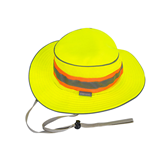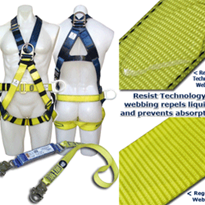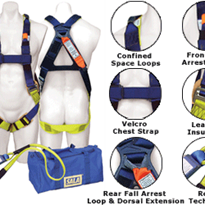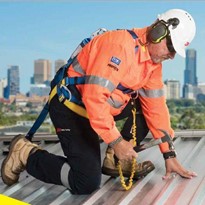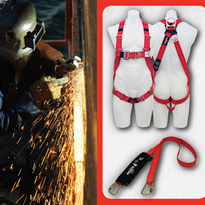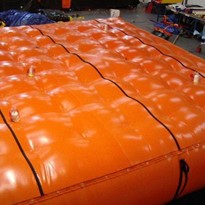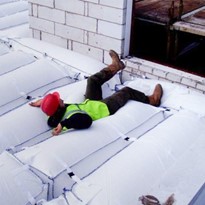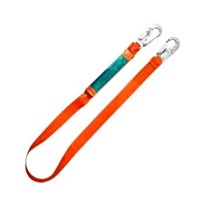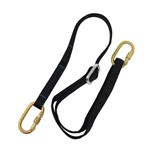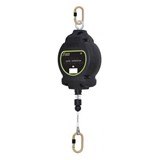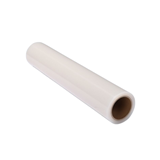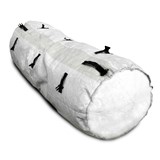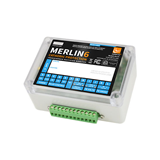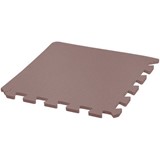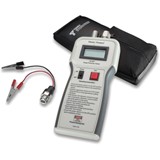Certainly there are the details of the OHS Act of 2000, OHS Regulations 2001, Codes of Practice, Australian Standards and Work Cover alerts to consider – but these are the legislative details – the principles are the same.
This article is an attempt to shed some light on the basic rules and the principles that need to be implemented to increase the safety of people working at height.
Firstly, any person working at a height of greater than 2M or at risk of falling 2M or more from one level to the next must be protected.
The hierarchy of control, implemented following a risk assessment, demands that the first step is to try and “engineer out” the need to work at height. For instance, the fitting of sight glasses to a storage vessel rather than have to climb and dip the tank.
If this is not possible, the next step is to prevent access to the height safety risk area by the provision of lock out systems, guard rails etc.
Only when these alternatives prove impossible and access to the risk area is required should the last option of the provision of protective equipment be used. The importance of selecting the correct equipment, its regular inspection and maintenance and the training of the employees are all critical issue for separate discussion.
There are two common systems of fall protection. The first is called RESTRAINT where the fall protection system prevents the employee from reaching the position where a fall may be possible. The second is FALL ARREST where the fall protection system must assume that a fall is possible.
Even when using a RESTRAINT system, all equipment should be FALL ARREST rated.
Every fall prevention system comprises 5 elements as follows:-
A – Anchor Point
The anchor point must be designed to stand a minimum loading of 15kN for single person fall arrest and 21kN for two people. To the layman these equate to being able to support an average size family car or a 4 wheel drive vehicle. Anchor points can vary from single points to straps round suitable beams or to the more sophisticated horizontal lifeline. They can also be on davit arms or tripods for confined space and rescue work. Permanent anchor points require certification on installation and recertified annually.
B – Body Harness
The person at risk is required to wear a correctly fitted full body harness certified to AS/NZS 1891.1 (note “designed to comply with AS/NZS 1891.1” is NOT acceptable).
The date of manufacture and the serial number of the harness must be clearly visible.
The full body harness is designed to spread any fall arresting forces over the load bearing parts of the body and the harness should be correctly configured for the work to be undertaken and the risks identified. It is best to select a harness that is identified by the type of task at hand (e.g. “roof-workers”, “confined space” or “riggers”). Harnesses should be inspected prior to each use and inspected by a competent person every 6 months. The maximum life of a harness is 10 years from date of manufacture.
C – Connector
To arrest any fall, the harness worn by the person at risk requires to be connected to the anchor point. Again there are a variety of ways in which this can be done. Rope or Web lanyards are the most common but rope grabs, ladder sleeves and self retracting lifelines are all considered as connectors. It is also essential that the connector is compatible with the harness and anchor point at both ends and particular attention needs to be given to the elimination of any potential for “rollout” caused by incompatible hardware.
D- Decelerator
The decelerator is generally incorporated into the connector and is the device that absorbs the energy in arresting any fall. The most common decelerator is the tear webbing type commonly called the “shock absorber”. Self retracting lifelines have clutch mechanisms that arrest the fall and reduce the forces transferred to the worker.
E- Emergency Rescue Plan
This is most commonly the fall arrest system component that is forgotten. The hazard analysis and risk assessment must include the possibility that a fall – albeit protected – may occur, and that a worker will then need to be rescued. Rescue times must be such that the risk of suspension trauma is minimised. That means that appropriate rescue equipment and personnel must be available and rescue techniques sufficiently practiced that rescue and recovery can be effected in an acceptable time frame. There is little point in saving the person from death through a fall to lose them because they cannot be recovered before further damage is sustained.
As mentioned earlier, the correct selection of compatible equipment is essential as is its inspection prior to use and recertification at specified periods. The most important aspect is, of course, the employee training both on the system and in the rescue techniques.
There are many other aspects of fall prevention that warrant detailed discussion and possibly specialist advice but it is important that the basic components of the system are firstly understood.
Capital Safety is the world’s leading designer and manufacturer of height safety, confined space and Industrial Rescue equipment. For personal advice about fall protection, contact Capital Safety on 1800 245 002(AUS) 0800 212 505 (NZ).



